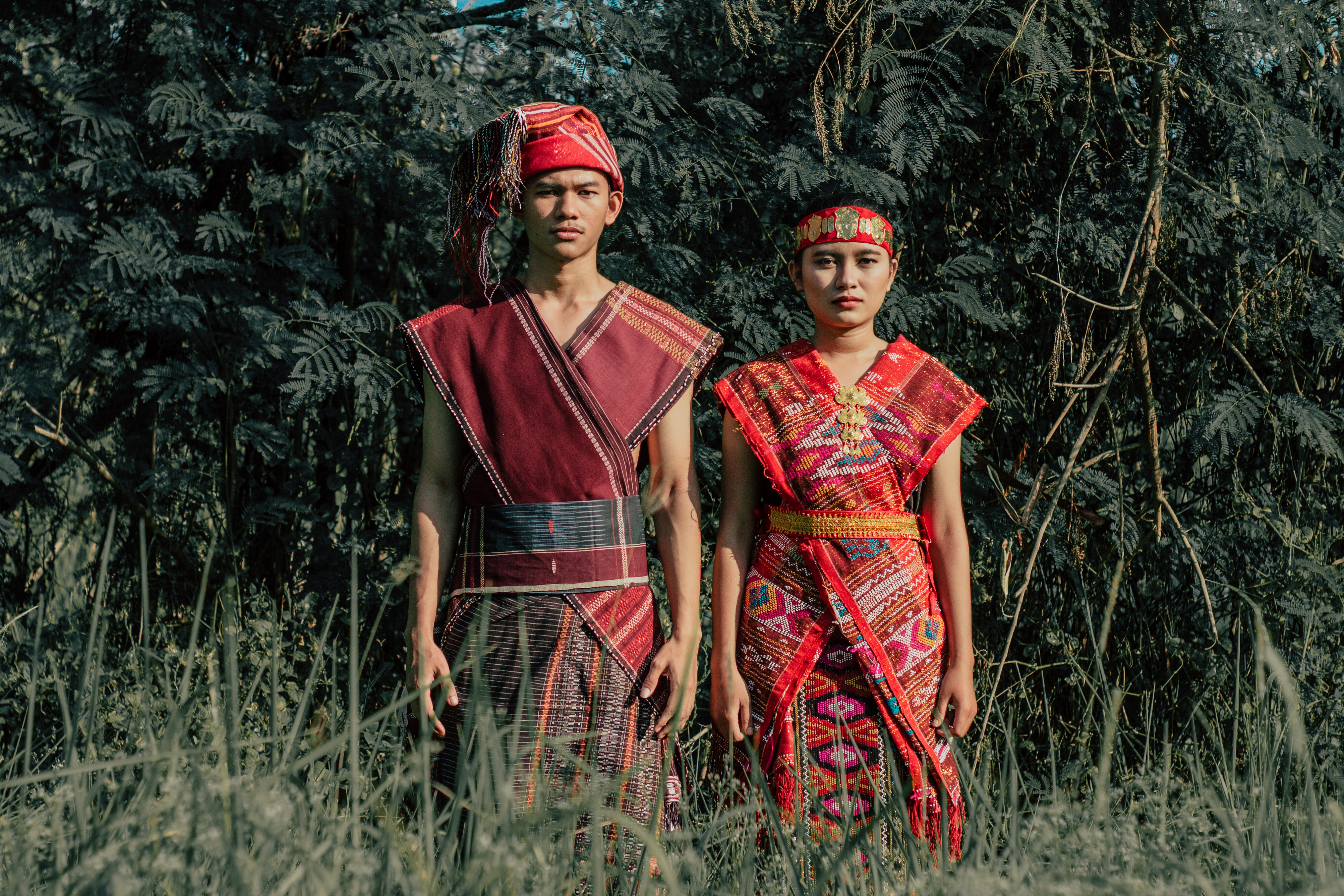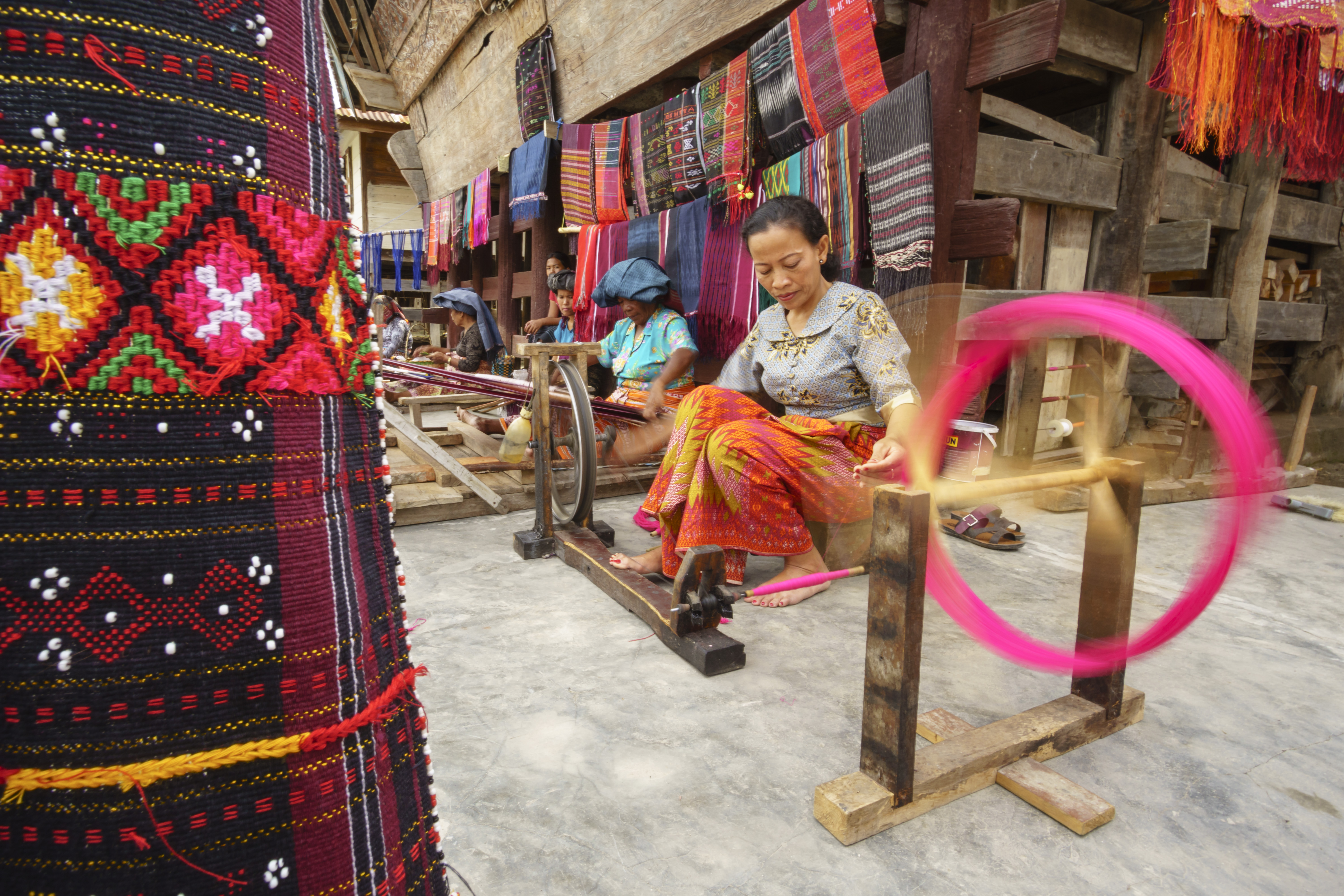|
Tandok Dance
Tandok dance (Batak: ''ᯖᯢ᯲oᯃ᯲'' )is a traditional Batak dance originating from the North Sumatra, Indonesia. This dance tells about the activities of harvesting rice using ''tandok'' carried out by mothers in the fields. In addition, this dance also contains the importance of family values between each other. Form and movement Tandok dancers are generally women who wear traditional Batak clothes, which are dominated by black and red. The dance properties used include tandok, ulos, and sarong. The Tandok dance is usually danced by four dancers, but this does not become a standard, so this dance can be performed by more than four people whose number is always even. This traditional dance is accompanied by Gondang music. Similar to gamelan in Java and Bali Bali () is a province of Indonesia and the westernmost of the Lesser Sunda Islands. East of Java and west of Lombok, the province includes the island of Bali and a few smaller neighbouring islands, notably ... [...More Info...] [...Related Items...] OR: [Wikipedia] [Google] [Baidu] |
Batak Language
__FORCETOC__ The Batak languages are a subgroup of the Austronesian languages spoken by the Batak people in the Indonesian province of North Sumatra and surrounding areas. Internal classification The Batak languages can be divided into two main branches, Northern Batak and Southern Batak. Simalungun was long considered an intermediary, but in current classifications it is recognized as part of the Southern branch.Adelaar, K. A. (1981). "Reconstruction of Proto-Batak Phonology". In Robert A. Blust (ed.), ''Historical Linguistics in Indonesia: Part I'', 1-20. Jakarta: Universitas Katolik Indonesia Atma Jaya. Within Northern Batak, a study noted 76% cognate words between Karo and Alas, 81% with Pakpak, 80% with Simalungun, and 30% with Malay (Indonesian).The Austronesian languages of Asia and Madagascar. K. Alexander Adelaar, Nikolaus Himmelmann, p. 535 Karo and Toba Batak are mutually unintelligible. Mandailing and Angkola are closer related to each other than to Toba. The g ... [...More Info...] [...Related Items...] OR: [Wikipedia] [Google] [Baidu] |
Batak People
Batak is a collective term used to identify a number of closely related Austronesian peoples, Austronesian ethnic groups predominantly found in North Sumatra, Indonesia, who speak Batak languages. The term is used to include the Karo people (Indonesia), Karo, Pakpak people, Pakpak, Simalungun people, Simalungun, Batak Toba people, Toba, Angkola people, Angkola, and Mandailing people, Mandailing which are related groups with distinct languages and traditional customs (''adat''). Prehistory Linguistic and archaeological evidence indicates that Austronesian peoples, Austronesian speakers first reached Sumatra from Taiwan and the Philippines through Borneo or Java about 2,500 years ago, and the Batak probably descended from these settlers. While the archaeology of southern Sumatra testifies to the existence of neolithic settlers, it seems that the northern part of Sumatra was settled by agriculturalists at a considerably later stage. Although the Batak are often considered to ... [...More Info...] [...Related Items...] OR: [Wikipedia] [Google] [Baidu] |
Indonesia
Indonesia, officially the Republic of Indonesia, is a country in Southeast Asia and Oceania between the Indian and Pacific oceans. It consists of over 17,000 islands, including Sumatra, Java, Sulawesi, and parts of Borneo and New Guinea. Indonesia is the world's largest archipelagic state and the 14th-largest country by area, at . With over 275 million people, Indonesia is the world's fourth-most populous country and the most populous Muslim-majority country. Java, the world's most populous island, is home to more than half of the country's population. Indonesia is a presidential republic with an elected legislature. It has 38 provinces, of which nine have special status. The country's capital, Jakarta, is the world's second-most populous urban area. Indonesia shares land borders with Papua New Guinea, East Timor, and the eastern part of Malaysia, as well as maritime borders with Singapore, Vietnam, Thailand, the Philippines, Australia, Palau, and India ... [...More Info...] [...Related Items...] OR: [Wikipedia] [Google] [Baidu] |
North Sumatra
North Sumatra ( id, Sumatra Utara) is a province of Indonesia located on the northern part of the island of Sumatra. Its capital and largest city is Medan. North Sumatra is Indonesia's fourth most populous province after West Java, East Java and Central Java, and also the most populous in the island of Sumatra. It covers an area of 72,981 km2. According to the 2020 census, the province's population in that year was 14,799,361. The mid-2021 official estimate is 14,936,148. North Sumatra is a multi-ethnic province. The Malay people are regarded as the natives of the east coast of the province, while the west coast of the province is mainly inhabited by the Batak (''Pakpak'', ''Angkola'' and ''Mandailing'' groups). The central highlands region around Lake Toba is predominantly inhabited by another ''Batak'' groups (''Toba'', ''Simalungun'' and ''Karo''). The Nias people are natives to ''Nias Island'' and its surrounding islets. With the opening of tobacco plantations in East S ... [...More Info...] [...Related Items...] OR: [Wikipedia] [Google] [Baidu] |
Tari Tandok 01
Tari may refer to: Places * Tari, Papua New Guinea, a town in the Hela Province of Papua New Guinea * Tari Urban LLG, a local-level government area of Papua New Guinea * Tari, Siliguri, a census town in Dajeeling district, West Bengal, India * Tari Airport, Papua New Guinea * El Tari Airport, Indonesia People * Tari (name) * Tari (Kashmiri tribe), a Kashmiri tribe and family name in India and Pakistan Other uses * Tarì, a coin minted in Sicily, Malta and south Italy from about 913 to 1859 * Tari, a character in the ''Meta Runner'' and ''SMG4'' series * Taiwan Agricultural Research institute (TARI), an agricultural research institute in Taiwan See also * '' Tari Tari'', a 2012 Japanese anime television series * Tary (other) * Thari (other) Thari may refer to: * something of, from, or related to Tharparkar, a region of Sindh, Pakistan * Thari language, spoken in Sindh, Pakistan * Tharri, a town in Larkana District, Sindh, Pakistan * Thari Mirwah, or Thar ... [...More Info...] [...Related Items...] OR: [Wikipedia] [Google] [Baidu] |
Ulos
Ulos is the traditional ''Tenun'' fabric of the Batak people of North Sumatra in Indonesia. Different kinds of ulos have different ceremonial significance. The ulos is normally worn draped over the shoulder or shoulders, or in weddings to ceremonially bind the bride and groom together. Ulos are traditionally hand woven and in the case of higher-quality examples are significant family heirlooms, to be worn at important events, such as funerals and weddings. With increasing modernisation has come the decline in significance of the ulos, with many varieties no longer in demand. History According to the Batak people, there are three sources of warmth for humans; Sun, Fire and Ulos. Why is ulos a source of warmth? Ulos is said to be a source of warmth because they were living on cold mountains. This natural condition makes sunlight insufficient to give warmth especially at night. Then, they created something that is able to give them warmth, also believed to be able to give the men ... [...More Info...] [...Related Items...] OR: [Wikipedia] [Google] [Baidu] |
Sarong
A sarong or sarung () is a large tube or length of fabric, often wrapped around the waist, worn in Southeast Asia, South Asia, Western Asia, Northern Africa, East Africa, West Africa, and on many Pacific islands. The fabric often has woven plaid or checkered patterns, or may be brightly colored by means of batik or ikat dyeing. Many modern sarongs have printed designs, often depicting animals or plants. Different types of sarongs are worn in different places in the world, notably the lungi in the Indian subcontinent and the izaar in the Arabian Peninsula. Etymology The term ''sarong'' () is an English loanword of Malay origin meaning 'to cover' or 'to sheath'. It was first used in 1834 referring to the skirt-like garment of the Malay. ''Sarong'' is also the colloquial and old spelling of the Indonesian and Malay word for , while in formal Indonesian it is known as ().Sarongis known in many names across Asia; including , ; , ; ; and . In West Africa, the word ''srong'' or '' ... [...More Info...] [...Related Items...] OR: [Wikipedia] [Google] [Baidu] |
Gamelan
Gamelan () ( jv, ꦒꦩꦼꦭꦤ꧀, su, ᮌᮙᮨᮜᮔ᮪, ban, ᬕᬫᭂᬮᬦ᭄) is the traditional ensemble music of the Javanese, Sundanese, and Balinese peoples of Indonesia, made up predominantly of percussive instruments. The most common instruments used are metallophones played by mallets and a set of hand-played drums called '' kendhang/Kendang'', which register the beat. The kemanak (a banana-shaped idiophone) and gangsa (another metallophone) are commonly used gamelan instruments in Bali. Other instruments include xylophones, bamboo flutes, a bowed instrument called a ''rebab'', a zither-like instrument ''siter'' (in Javanese ensemble) and vocalists named '' sindhen'' (female) or ''gerong'' (male).Sumarsam (1998)''Introduction to Javanese Gamelan'' Middletown. Although the popularity of gamelan has declined since the introduction of pop music, gamelan is still commonly played in many traditional ceremonies and other modern activities in Indonesia, b ... [...More Info...] [...Related Items...] OR: [Wikipedia] [Google] [Baidu] |
Java
Java (; id, Jawa, ; jv, ꦗꦮ; su, ) is one of the Greater Sunda Islands in Indonesia. It is bordered by the Indian Ocean to the south and the Java Sea to the north. With a population of 151.6 million people, Java is the world's List of islands by population, most populous island, home to approximately 56% of the Demographics of Indonesia, Indonesian population. Indonesia's capital city, Jakarta, is on Java's northwestern coast. Many of the best known events in Indonesian history took place on Java. It was the centre of powerful Hindu-Buddhist empires, the Islamic sultanates, and the core of the colonial Dutch East Indies. Java was also the center of the History of Indonesia, Indonesian struggle for independence during the 1930s and 1940s. Java dominates Indonesia politically, economically and culturally. Four of Indonesia's eight UNESCO world heritage sites are located in Java: Ujung Kulon National Park, Borobudur Temple, Prambanan Temple, and Sangiran Early Man Site. ... [...More Info...] [...Related Items...] OR: [Wikipedia] [Google] [Baidu] |
Bali
Bali () is a province of Indonesia and the westernmost of the Lesser Sunda Islands. East of Java and west of Lombok, the province includes the island of Bali and a few smaller neighbouring islands, notably Nusa Penida, Nusa Lembongan, and Nusa Ceningan to the southeast. The provincial capital, Denpasar, is the most populous city in the Lesser Sunda Islands and the second-largest, after Makassar, in Eastern Indonesia. The upland town of Ubud in Greater Denpasar is considered Bali's cultural centre. The province is Indonesia's main tourist destination, with a significant rise in tourism since the 1980s. Tourism-related business makes up 80% of its economy. Bali is the only Hindu-majority province in Indonesia, with 86.9% of the population adhering to Balinese Hinduism. It is renowned for its highly developed arts, including traditional and modern dance, sculpture, painting, leather, metalworking, and music. The Indonesian International Film Festival is held every year in Bal ... [...More Info...] [...Related Items...] OR: [Wikipedia] [Google] [Baidu] |
Salendro
The gamelan salendro is a form of gamelan music found in West Java, Indonesia. It is played as an accompaniment to wayang golek (rod puppet) performances and dances. It uses a similar ensemble as a small central Javanese gamelan, but has developed differently, and shows the more exuberant character.Broughton, Simon, et al., eds. ''World Music: The Rough Guide''. London: The Rough Guides, 1994. Pages 420-421. See also * Gamelan * Degung * Angklung The (Sundanese: ) is a musical instrument from the Sundanese people in Indonesia made of a varying number of bamboo tubes attached to a bamboo frame. The tubes are carved to have a resonant pitch when struck and are tuned to octaves, similar t ... References Gamelan ensembles and genres Sundanese music {{music-genre-stub ... [...More Info...] [...Related Items...] OR: [Wikipedia] [Google] [Baidu] |




.jpg)
